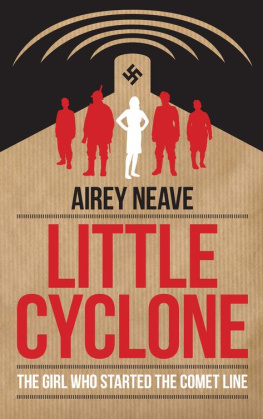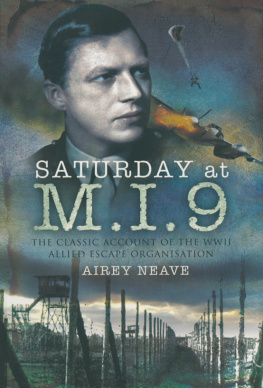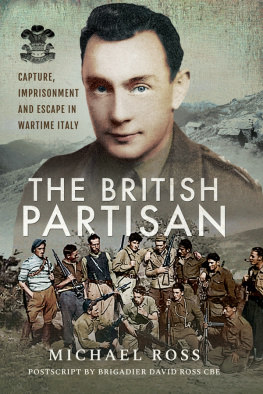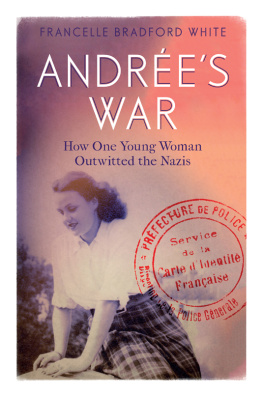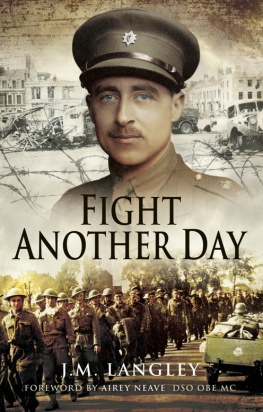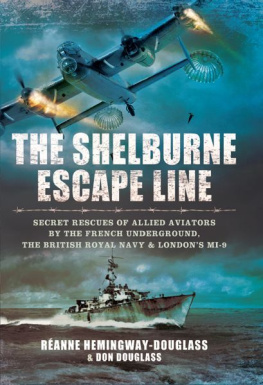Dedicated to all the members of the Comet Line, and in particular the 156 men and women who sacrificed their lives to help Allied servicemen escape.
W hen a 24-year-old Belgian girl arrived at the British Consulate in Bilbao in August 1941 with a young Scottish soldier she claimed to have brought down from Brussels, through occupied France and over the Pyrenees, she was denounced by MI6 as an obvious German plant. They soon changed their minds. Andre De Jongh was dubbed the Little Cyclone by her father because she was so determined it was impossible to ignore anything she said. She was inspired by Edith Cavell, the British nurse shot for espionage during the First World War, and after the Germans invaded Belgium in May 1940 she began nursing British soldiers trapped behind enemy lines. It was but a short step to emulating her heroine and setting up an escape line that would carry Allied servicemen through occupied France and over the Pyrenees into neutral Spain.
Among the literally hundreds of Belgian, French and Basque agents who worked for the Comet Line, Andre De Jongh was known only by her codename Dde. MI6 initially dubbed her Postman, because she not only brought parcels, the servicemen she rescued initially British soldiers trapped in Belgium, but later hundreds of escaped Allied prisoners of war or airmen shot down over occupied territory she also brought letters, intelligence from inside occupied Belgium and France.
The escape lines smuggling Allied servicemen out of occupied Europe were run in London by MI9. It was ostensibly a department of military intelligence but in reality it was part of MI6, firmly under the control of the MI6 Assistant Chief, Claude Dansey. Interestingly, despite the British denial at the time of Edith Cavells execution that she was a spy, Dansey and other senior members of MI6 justified their control over MI9 on the basis that Cavells role as an intelligence agent was uncovered because of her other role in assisting Allied servicemen to escape. Andre De Jongh truly was following in the footsteps of her heroine.
The author of this book, Airey Neave, who had himself escaped from Colditz and made his way home to Britain, was a leading member of MI9, along with Jimmy Langley, who later married Peggy van Lier, one of the heroines of this book. Neave wrote two books on his time running escape lines, one of them a more detailed account of the sections work, but it is Little Cyclone which is by far the more moving and exciting, relating the very human, real-life stories of the Belgian, Basque and French resistance members who risked their lives to spirit British and other Allied servicemen to freedom.
A true measure of the risk they faced can be judged from the list at the back of this book of the 156 members of the Comet Line who died as a result of their work helping Allied servicemen escape. They included Andre De Jonghs father Frdric, who ran the service from Brussels until his arrest in 1942. He was executed by firing squad. His daughter Andre would become one of the Gestapos most wanted targets. When she was finally arrested in January 1943, she was sent first to Ravensbrck concentration camp and then to Mauthausen. She survived the camps. Eighty-eight of her colleagues did not, while a further four died of the dreadful effects of those camps shortly after being liberated. All of the people on that list, and indeed all of the members of the Comet Line to survive, are owed a huge debt, not only by the British and Allied forces they helped to rescue, but by all those who value freedom. This is a truly inspiring book.
Michael Smith
Editor of the Dialogue Espionage Classics
December 2012
W hen Little Cyclone was first published, in 1954, I was a seven-year-old girl. Too young to understand. So I didnt read the book at the time, but I did hear the grown-ups around me talking about the girl whose father called her le Petit Cyclone. I heard how the Little Cyclone had spent the war doing the same dangerous things as my own father. How they helped Allied airmen to evade capture after their aircraft had been shot down by the Boches the enemy who had invaded our country and treated our people so badly. How they crossed the Bidassoa River with Florentino, the Basque who would guide them across the Pyrenees to the safety of Spain. I was young, but I knew I was listening to a real human story. I could feel the action and feelings. It was fascinating.
From that moment on, the story of le Rseau Comte, the Comet Line, became a regular part of my life. Every year, different people, who always seemed to be great friends of my father, would arrive at our house from Great Britain, people like Airey Neave, Michael Creswell and James Langley and his wife Peggy, formerly Peggy van Lier of the Comet Line; from Canada, like the airman Angus McLean; from France, like the guides Yvonne and Robert Lapeyre; from all parts of Belgium. There was Tante Go, Michou, Monique, Jean-Franois, Jacques, Bernadette, Dde, Albert names that will be familiar to you when you have read this book. They were all there to do the same thing, talk about the same things, look at the same fragile, old papers which my father took out to show them year, after year, after year. Each year telling a different, real, living story, remembering together events that seemed to them always to be a good memory, albeit tinged with sadness. Then they would sip a drop, or sometimes more, of whisky or cognac. Every year from the end of the war onward, the members of the Amicale Comte came to Brussels to remember and to celebrate the rescue of people, of countries, of life, in the name of the freedom they fought for throughout the years of war. They all had the same spirit: generosity, dedication to helping others and saving others lives; fighting without weapons, without killing. As described by Jean-Franois Nothomb, the head of le Rseau Comte after the arrest of the initiator and embodiment of the spirit of the escape line, Dde De Jongh:
In their efforts to rescue others and in the strength of their love, the members of Comte were armed only with their courage and their belief in the value of freedom.
The Comet Line was a chain of people from different countries, from different backgrounds, of different beliefs, religions, lifestyles, and yet it was a family. There were two thousand, three thousand nobody will ever know exactly how many. We are still discovering new names of that huge network, each one linked secretly to the others.
The Comet Line lasted from August 1941 to the end of 1944. After the war, the Amicale Comte preserved their bonds and memories until 2001. In 2005, I heard that there was a Comte Walk being organised in the Pyrenees and I went. I wanted to live the famous Bidassoa of my childhood and the world of Florentino. I discovered much more. The spirit of the Comet Line was still alive, with no boundaries of either time or place. So many different people from every continent, and all there with the same feelings and desire: to share and to discover and to share some more. All were so different but each had their own fascinating link to Comte. One was there because, assisted by the line, his father had crossed the Pyrenees to reach the United Kingdom. Another was looking for information about his uncle who crashed and was helped to escape. One was following his mothers footsteps to write the story of her war as part of the Comet Line and her escape after she was burned (betrayed). Another was a nephew of Florentino. One was a son of a fisherman who brought the escapers fish. Another was the son of someone in MI9. There was a historian explaining what happened. Volunteers from the whole area were helping. There was a

